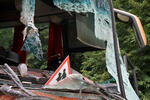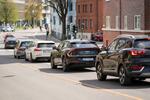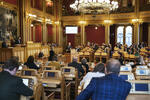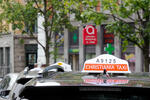-
Norway in the driver's seat of bus safety
A separate European standard for crash safety in buses should be developed, according to TØI researchers in a new report.
-
Proposed tax increases for electric cars will increase greenhouse gas emissions
Full toll rates and VAT for electric cars will reduce profitability of owning electric cars and increase emissions from passenger cars in Oslo up to 2030.
-
Parking regulations are essential to limit car use in cities and towns
Political anchoring, up-to-date knowledge and precise communication with all involved parties are crucial for ensuring a comprehensive parking policy.
-
Investigation for investigation's sake?
Politics and not knowledge are often decisive for political decisions
Considerations other than the academic knowledge top politicians themselves have commissioned are decisive for political decisions, particularly in the transport sector.
-
Deregulating the Norwegian taxi market doubled the number of taxi licences
The number of taxi licenses increased from 8,000 to 18,100 in two and a half years, but the turnover is still lower than before.
-
Norwegian accident models among the best in the world
Norwegian accident models maintain a high professional standard and are in line with the best in the world.
-
Too difficult for the transport sector to fulfill the climate goals?
A very ambitious technology development and high mixing of biofuel are the most important measures for reaching the climate goals.
-
Parcel lockers reduce car use related to pick-up of goods
Package lockers provide more climate-friendly distribution than home delivery and pick-up in stores and kiosks.
-
Norwegian online shoppers positive to environmentally friendly home delivery
Norwegian customers want and are willing to pay for environmentally friendly home delivery, but not if the price or delivery time increase.
-
Major challenges for international freight transport during the pandemic
Reduced capacity, major delays and cost increases for international freight transport, but little change in transport volumes related to Norwegian foreign trade.
















